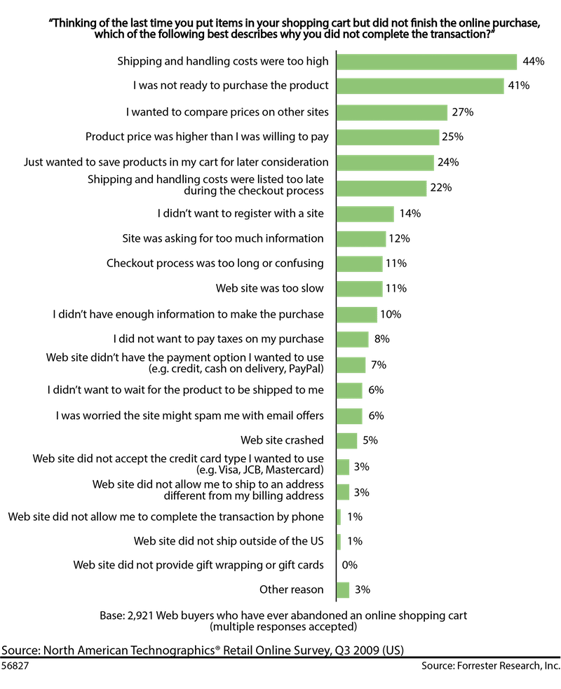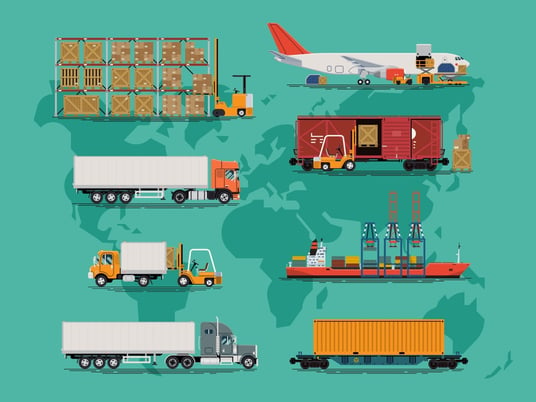
Shipping: The Biggest Profitability Driver You’re Not Optimizing
Businesses looking to improve their bottom line often focus their energy and resources on complex, high-cost initiatives — a resource-intensive investment in a new product line, for example, or an expensive gamble on a marketing campaign to introduce their brand to a new customer demographic.
And while such initiatives might represent wise business investments, many of these same companies — incredibly — fail to take the relatively simple and inexpensive step of optimizing perhaps their largest single lever for improved margins: their shipping processes.
That’s right: For many businesses today — from pure-play eCommerce retailers, to onmi-channel sellers, to manufacturers and distributors — shipping represents the most readily-available driver for improving profits.
In other words, while many businesses are looking for profit-boosting opportunities “out there” — in new advertising tactics, new customer segments, new selling strategies, new territories — they have a real opportunity to increase their margins much closer to home, by simply optimizing their shipping infrastructure.
Businesses Need to Start Thinking of Shipping as Part of Their Customer Acquisition Strategy
In fact, when they have better visibility into their overall shipping processes — and understand how a top-quality shipping experience can win them new customers and turn existing customers into loyal fans — businesses will start viewing shipping not merely as necessary “overhead” but rather as a strategically important component of their customer acquisition costs (CAC).
Consider this report from Forrester Research, which found that shipping impacts customer conversion rates more than any other factor.

This represents good news for any business that has not yet taken a close look at its shipping infrastructure. It means that by reviewing your fulfillment processes, improving shipping options for customers, broadening your relationships with carriers and brokers (or just better using those that you already have), and leveraging analytics to ensure you apply the most cost-effective shipping method and packaging to every item you send out, you can reclaim a lot of the margin you are probably leaking to an inefficient and ad hoc shipping process.
The even better news for your business: Optimizing your shipping infrastructure will be a lot simpler and less expensive than other items on your CAC — like coming up with a brilliant ad campaign.
Why So Few Businesses Have Optimized — or Even Fully Understand — Their Shipping Processes
You might be wondering: How can this be? If shipping represents the biggest opportunity to immediately influence their profit margins, why do so few companies optimize their shipping infrastructure?
Fair question.
One major reason is simple lack of knowledge: Because so few businesses have true visibility into their own shipping costs and processes, they’re unaware of just how much their current processes are costing them — and how often there are better-quality, less-expensive shipping options readily available for the types of shipments they’re processing every day.

Here are just a few of the many reasons that businesses have difficulty fully understanding their own shipping processes or being able to predict and control their shipping costs.
1. Shipping prices are always changing.
Shipping costs quoted by carriers can change at any given moment, due to a wide range of variables — accessorials, last-minute surcharges, rebills, etc.
In fact, the “hard shipping cost” — the actual cost to the shipper, as specified on the tariff from the carrier or broker — can change so quickly, and so often, it is rarely the actual price the shipper ends up paying.
Consider also that often two shippers will pay different rates for the identical service. It’s often simply a matter of negotiation, and many businesses do not even know they have room to negotiate shipping terms because there are no benchmarked standards.
2. Many businesses don’t have the full picture of carrier options.
Businesses also often pay more than they need to for shipping — and in many cases receive a lower-quality shipping experience for their customers — simply because they aren’t effectively using the carriers and services they have set up or because they are working with the wrong ones to begin with. Every carrier has strengths and weaknesses and the key is to ensure carrier strengths align with your shipping needs.
Worse, some companies enter into exclusive arrangements, giving a single carrier all of their shipping business, because they’ve come to know and trust that carrier. No single carrier is great at every lane, every service, and/or every shipment type.

These decisions are understandable given that so few businesses realize:
1) how every carrier has specific strengths and weaknesses
2) how to effectively optimize carriers and services on an order-by-order basis
3) how many terrific shipping carriers they might discover,
4) how much money they might save by letting a group of carriers bid for each shipment, and...
5) how much shipping affects their customers’ experience and even their likelihood of buying.
3. Few businesses have ever calculated their “soft shipping costs” and therefore don’t fully understand shipping’s true impact on their bottom line.
For businesses that handle shipping and packaging in-house, consider all of the time and resources devoted to managing those elements of a typical transaction. They might include:
- Carrier rate shopping
- Carrier booking
- Box or package selection
- Order packing
- Carrier tracking
- Shipment auditing and reconciliation
- Returns handling
- Customer service (calls, emails, IMs with shipment questions or issues)

Where do these internal expenses go on your business’s ledger? If you don’t track and monitor these types of tasks as shipping-specific expenses, you are probably underestimating how much your shipping infrastructure costs you.
And as I am trying to illustrate with this post, if you manage all of these tasks manually, you are almost certainly not managing your shipping infrastructure as cost-effectively as you could — meaning your business is leaving some profit margin on the table.
These are just some of the reasons that, unless you’ve already optimized your shipping infrastructure, shipping likely represents significant low-hanging fruit for boosting your profit margins.
Myth: A Standard Shipping Calculator or Shipping API Makes Your True Shipping Costs Transparent and Predictable
At this point you might be wondering: What about shipping calculators and shipping APIs? Won’t they give us visibility into us how much our shipping is costing us?
Another fair question. But the answer, unfortunately, is no.
You cannot truly understand how your shipping infrastructure is impacting your bottom line by plugging some numbers into an online shipping calculator or pinging an API with the same data — because those numbers define shipping far too narrowly.
In fact, virtually all online shipping calculations leave out many of the most important details of your shipping infrastructure — such as whether or not you’re finding the most cost-effective carriers for each shipment, whether or not you’re packaging each order in the most cost-effective boxes, and whether or not the array of shipping choices you offer customers is positively or negatively affecting their rates of conversion.
Look at this research below, on how a seller’s shipping options can affect would-be consumers’ likelihood of abandoning online shopping carts.
As you read reasons listed here for why shoppers stop a transaction after reviewing the shipping details, ask yourself, How would a shipping calculation and carrier service offering account for these lost sales?
For most companies, shipping costs are among the largest business expenses — often second only to COGS. Yet shipping is also often the most-opaque cost on a business’s books, because shipping rates are often different for almost every transaction, and because few businesses ever gain the full picture of both the hard and soft costs of their shipping infrastructure.
But this actually is good news, not bad. Whether your company is a pure-play eCommerce retailer, manufacturer, omni-channel seller, or distributor, shipping costs will be a drain on your profit margins only if your company isn’t able to fully understand, systemize and control those costs.
By taking the steps to understand your true shipping costs and how they can be calculated and managed, you can take back control of the most important factor in your business: profits. To learn more about how to take back control of profit margins, contact sales@shiphawk.com today!
